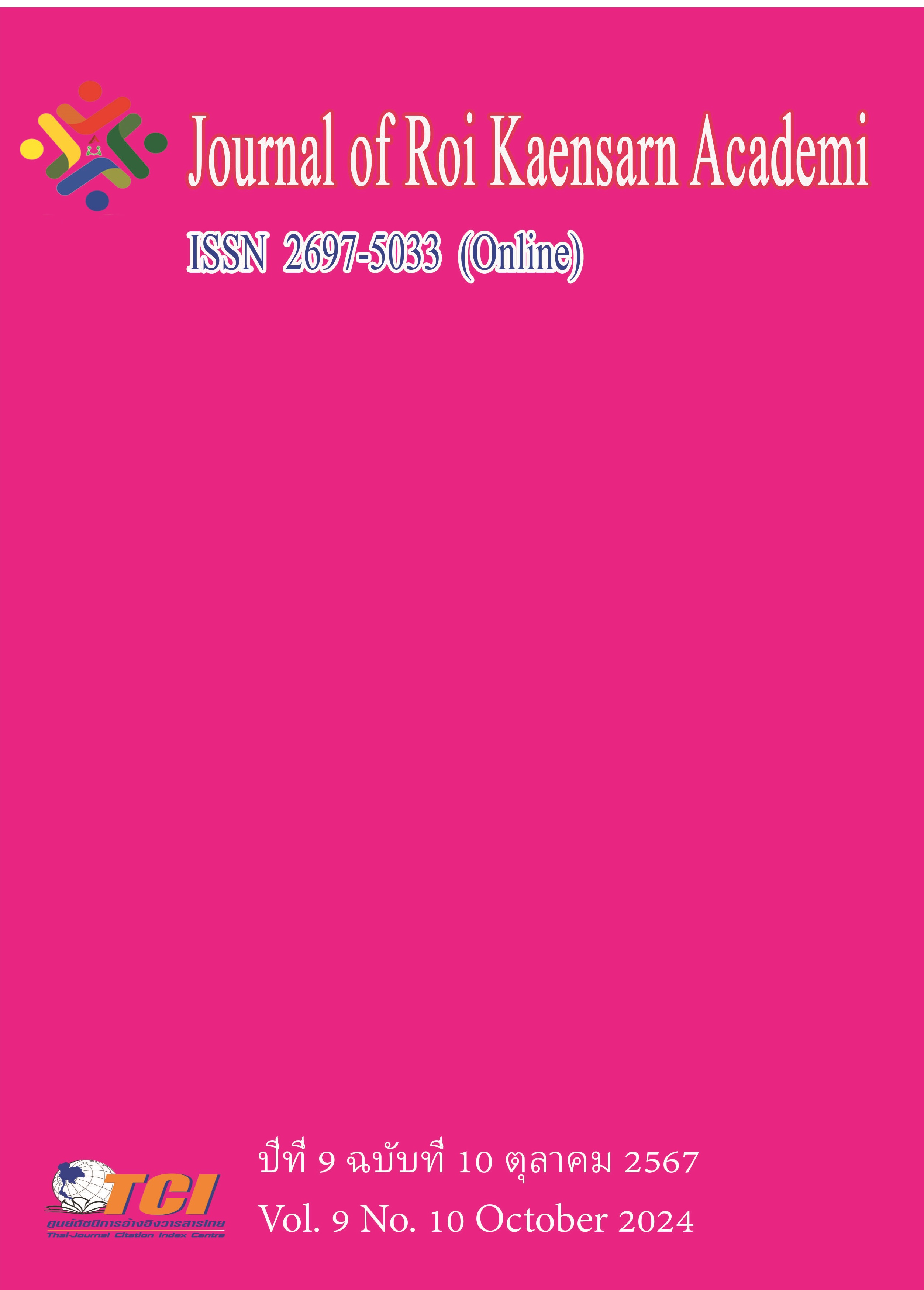The Manual Development of Singing Skills Performance Assessment
Main Article Content
Abstract
The purpose of this research was 1) to create a manual for the assessment of singing skills and 2) to investigate the quality of the manual. The research was conducted in two stages: Step 1: Synthesis and verification of the accuracy of the content of the Vocal Skills Assessment Manual, and Step 2: Quality Verification of the Vocal Skills Assessment Manual. The sample group in the trial of the Vocal Skills Assessment Method Manual using the Probability Sampling method was 40 students of singing majors from the College of Music, Mahasarakham University, who analyzed the data using the Assessor's Confidence Statistics (RAI), the Correlation Coefficient with the Pearson Product Moment formula, and the confidence quality of the attitude measurement form with Cronbach's α - Coefficient formula.
The results of the study showed that the manual for evaluating singing skills consisted of 4 parts: Part 1, Introduction; Part 2: Components of Vocal Skills Assessment Part 3 Guidelines for Evaluating Singing Skills Part 4 Examples of Singing Skills Assessment and Attitude Assessment for Singing, which are set out in 7 areas: 1) accuracy of rhythm and pitch, 2) singing technique, 3) language clarity, 4) vocal accent, 5) conveyance of musical emotions, 6) memory, and 7) personality. The evaluation list consists of 11 items: 1) accuracy of the rhythm; 2) accuracy of the melody; 3) Accuracy and strength of singing high pitches; 4) Accuracy and strength of singing low voices; 5) Clarity of specific techniques of the song; 6) Correct and clear pronunciation of the language; 7) The accent in singing is appropriate for the song; 8) Conveying the emotion of music through facial expressions, eyes, and posture of singing; 9) accuracy in the lyric of the song used in singing; 10) the appropriateness of standing posture and holding the microphone; and 11) dressing appropriately for the song being sung. The results of the quality of the vocal skill assessment method manual showed that the assessor's confidence value (RAI) was 0.992, so it can be considered that the assessment created by the researcher has the confidence quality of the two evaluators. The confidence value of the assessment is 0.952, which shows that the confidence value of the assessment is at a high and appropriate level. In addition, the confidence value of the attitude measurement model was 0.851, which showed that the attitude measurement created by the researcher had a relatively high quality of confidence in the measurement model.
Article Details
References
ณัฐพล เลิศวิริยะปิติ. (2563). การสร้างแบบฝึกทักษะการตีฆ้องวงใหญ่:กรณีศึกษาภูมิปัญญาท้องถิ่น สำนักดนตรีไทยบ้านอรรถกฤษณ์. ปริญญาการศึกษามหาบัณฑิต สาขาวิชาศิลปศึกษา คณะศิลปกรรมศาสตร์. บัณฑิตวิทยาลัย: มหาวิทยาลัยศรีนครินทรวิโรฒ.
ดุษฎี พนมยงค์ บุญทัศนกุล. (2547). สานฝันด้วยเสียงเพลง. สำนักพิมพ์บ้านเพลง.
ปาริฉัตร สุ่มมาตย์. (2564). การศึกษาผลสัมฤทธิ์การขับร้อง 2 แนว โดยใช้แผนการจัดการเรียนรู้แบบร่วมมือตามแนวคิดคาแกนสำหรับผู้เรียนอายุ17 - 18 ปี. ปริญญาดุริยางคศาสตรมหาบัณฑิตสาขาวิชาสังคีตวิจัยและพัฒนา. บัณฑิตวิทยาลัย: มหาวิทยาลัยศิลปากร.
วรางคณา จูเจริญ. (2561). การพัฒนาความสามารถในการคิดอย่างมีวิจารณญาณและทักษะการขับร้องโดยใช้การจัดการเรียนรู้ แบบสืบเสาะหาความรู้ร่วมกับแนวคิดของโคดาย สำหรับนักเรียนชั้นมัธยมศึกษาปีที่ 3. ปริญญาศึกษาศาสตรมหาบัณฑิต สาขาหลักสูตรและการสอน. บัณฑิตวิทยาลัย: มหาวิทยาลัยธุรกิจบัณฑิตย์.
สลิลทิพย์ สุวรรณมณี. (2564). การศึกษาเทคนิคและวิธีการฝึกซ้อมขับร้องเพลงสากลของพริมาภา กรโรจนชวิน. งานวิจัย วิทยาลัยการดนตรี. บัณฑิตวิทยาลัย: มหาวิทยาลัยราชภัฏบ้านสมเด็จเจ้าพระยา.
สาวิตรี รุ่งศิริ. (2561). การพัฒนาแบบประเมินการปฏิบัติการเป่าขลุ่ยไทยพื้นฐาน. วิทยานิพนธ์ศึกษาศาสตรมหาบัณฑิต สาขาการวิจัยและประเมินทางการศึกษา คณะศึกษาศาสตร์. บัณฑิตวิทยาลัย: มหาวิทยาลัยเกษตรศาสตร์.
Cronbach, L. J. (1951). Coefficient alpha and the internal structure of tests. Psychometrika,
Pearson, K. (1895). Note on Regression and Inheritance in the Case of Two Parents. Proceedings of the Royal Society of London. 58, 240-242.
Wiggins, G., & McTighe, J. (1998). Understanding by Design. Alexandria, VA: Association for Supervision and Curriculum Development (ASCD).
